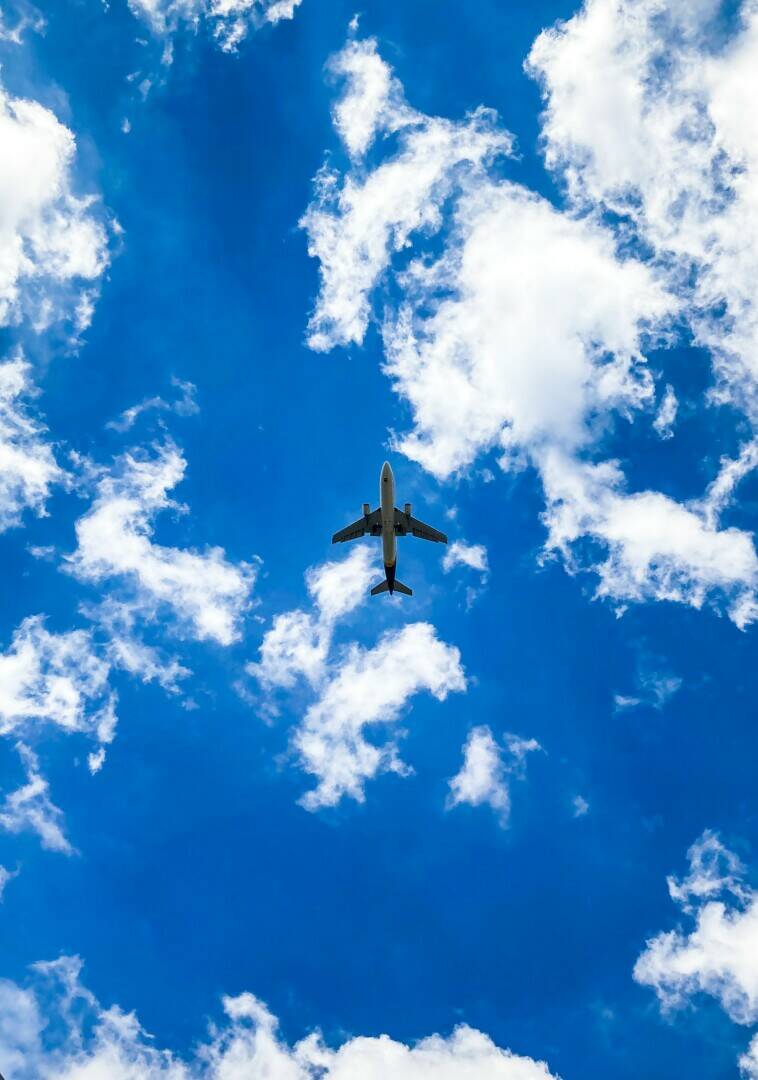The accelerating pace of technology is creating new opportunities for aircraft avionics to play an increasingly important role in air traffic management.


Airspace Article



“With the advent of digital aircraft and ATM systems all sharing data under system-wide information management (SWIM), a standardised heading reference system is required”
Emerging technologies for future skies: Airborne Capabilities
“Over the next decade and beyond, operations enabled by [aircraft] capabilities promise more efficient trajectory management, including spacing and separation operations with fewer interventions needed by the ground, reduced climate impacts, improved communications, increased safety, and better decision-making by flight crews, air traffic controllers and dispatchers”
Emerging technologies for future skies: Airborne Capabilities

Airspace Article
There are a multitude of challenges in deploying new applications to airborne platforms. There is a questionable incentive for airlines to equip when the benefits are more for airspace efficiency, for example. And if only a few airlines equip them then ANSPs will find it hard to justify any compatible investment.
Even if the investment is justified, finding the money may prove troublesome. And it will be a long process to forward fit or retrofit on a wide variety of aircraft, making the return on investment equally extended. There is also a regulatory timeframe to consider and a transition period where ANSPs will have to deal with equipped and non-equipped aircraft.
Overcoming these barriers will require collaboration among all stakeholders. The paper recommends a proactive approach that would include improving awareness of new airborne capabilities and giving operators a forum to coordinate and express their priorities.
There also needs to be common standards and regulations for the technologies across different regions and strategies to incentivise equipage. There could even be shared incentive mechanisms so that aircraft and ground system deployment can be synchronised through common mandates.
“The various airborne technologies, capabilities and applications described in this paper have great potential to improve safety, capacity, flight efficiency, and to reduce costs and the environmental footprint of aviation, Airborne Capabilities concludes. “However, they are not often being matured in an integrated manner and in consideration for how they can be jointly implemented. ANSPs, manufacturers, and operators, therefore, face a significant challenge in integrating these capabilities into flight deck and ground automation systems, developing enabling procedures, and training flight crews, air traffic controllers, and managers to incorporate them into their operations in a coordinated and more interconnected way that justifies investment.”
Challenges and solutions
An immediate impact could be made by true north operations. The Airborne Capabilities paper notes that “with the advent of digital aircraft and ATM systems all sharing data under system-wide information management (SWIM), a standardised heading reference system is required”.
The systems and references used across aviation can end up with slightly different values for magnetic north when computing flight paths and other aspects of operations and therefore hinder efficiency. Switching to a common True North system means all stakeholders will be using the same heading/proposed track values for flight plan conformance and checking.
The concept is already working within high north and south latitude regions of the world and during oceanic operations by some air carriers. All of Canada’s northern airspace is designated as a True North Heading Reference area, for example. And, generally speaking, modern aircraft are capable of True North Heading Reference operations. The idea has been discussed at ICAO level and an implementation plan is imminent.
Once in effect, True North will be a constant and stable heading, reducing the workload of airlines and air navigation service providers (ANSPs) alike.
Further out in time is formation flying. This involves Wake Energy Retrieval (WER), the principle that migration birds use to save energy.
In essence, a correctly equipped aircraft will be able to fly in the smooth updraft created by an aircraft in front of it. This provides lift and so enables a decrease in thrust, reducing fuel burn and emissions by some 5-10%. NASA and Airbus have conducted test flights and generated results consistent with the theory.
A deployable system capable of safely taking advantage of WER is still at the research and development stage. The leading and trailing aircraft need aligned systems to allow automatic formation flight. There is a ground component too, including changes to short term conflict alert and the coordination of aircraft entering and exiting formations.
The paper notes that aircraft could also do more on the ground. Surface Alerts, or SURF-A receives and processes ADS-B (automatic dependent surveillance – broadcast) messages from surrounding traffic and provides a collision risk warning to flight crews in all situations close to the runway.
Runway incursions are a major safety issue, and it is estimated that SURF-A could reduce runway collision risk by at least 70%. The SURF-A application is under active development and Airbus will soon begin offering it for installation on the A320/A330 aircraft families.
Short and long-term impact


CANSO’s Airborne Capabilities paper – produced by the CANSO Strategic Technology Workgroup as part of a series examining emerging technologies – explores how aircraft will become a more active participant in the management of airborne traffic in all domains and phases of flight.
“Over the next decade and beyond, operations enabled by [aircraft] capabilities promise more efficient trajectory management, including spacing and separation operations with fewer interventions needed by the ground, reduced climate impacts, improved communications, increased safety, and better decision-making by flight crews, air traffic controllers and dispatchers,” notes the paper.
The paper explores in detail several of the key flight deck technologies and concepts that are expected to have significant impacts on ATM operations over the next decade and beyond.
Among the many developments discussed in the paper, the list of applications includes:
4D Trajectory Based Operations: This represents a move away from sector-based flight management.
FANS-1A: This supports a variety of operational improvements, including a single button push for uplinked route clearances.
Baseline 1 and Baseline 2: These improve datalink communications.
ATN/IPS: The Aeronautical Telecommunications Network/Internet Protocol Suite is an emerging network standard that will eventually replace ACARS.
D-Taxi: This helps aircraft ground movement.
Brake to Vacate: This automatically manages aircraft braking so that it can leave the runway at the selected taxiway exit.
Trajectory Negotiation Applications: These improve situational awareness and incorporate user preferences at any stage of flight at trajectory determination and modification processes.

Read full article

The accelerating pace of technology is creating new opportunities for aircraft avionics to play an increasingly important role in air traffic management.
Airspace Article



Airspace Article
There are a multitude of challenges in deploying new applications to airborne platforms. There is a questionable incentive for airlines to equip when the benefits are more for airspace efficiency, for example. And if only a few airlines equip them then ANSPs will find it hard to justify any compatible investment.
Even if the investment is justified, finding the money may prove troublesome. And it will be a long process to forward fit or retrofit on a wide variety of aircraft, making the return on investment equally extended. There is also a regulatory timeframe to consider and a transition period where ANSPs will have to deal with equipped and non-equipped aircraft.
Overcoming these barriers will require collaboration among all stakeholders. The paper recommends a proactive approach that would include improving awareness of new airborne capabilities and giving operators a forum to coordinate and express their priorities.
There also needs to be common standards and regulations for the technologies across different regions and strategies to incentivise equipage. There could even be shared incentive mechanisms so that aircraft and ground system deployment can be synchronised through common mandates.
“The various airborne technologies, capabilities and applications described in this paper have great potential to improve safety, capacity, flight efficiency, and to reduce costs and the environmental footprint of aviation, Airborne Capabilities concludes. “However, they are not often being matured in an integrated manner and in consideration for how they can be jointly implemented. ANSPs, manufacturers, and operators, therefore, face a significant challenge in integrating these capabilities into flight deck and ground automation systems, developing enabling procedures, and training flight crews, air traffic controllers, and managers to incorporate them into their operations in a coordinated and more interconnected way that justifies investment.”
Challenges and solutions
CANSO’s Airborne Capabilities paper – produced by the CANSO Strategic Technology Workgroup as part of a series examining emerging technologies – explores how aircraft will become a more active participant in the management of airborne traffic in all domains and phases of flight.
“Over the next decade and beyond, operations enabled by [aircraft] capabilities promise more efficient trajectory management, including spacing and separation operations with fewer interventions needed by the ground, reduced climate impacts, improved communications, increased safety, and better decision-making by flight crews, air traffic controllers and dispatchers,” notes the paper.
The paper explores in detail several of the key flight deck technologies and concepts that are expected to have significant impacts on ATM operations over the next decade and beyond.
Among the many developments discussed in the paper, the list of applications includes:
4D Trajectory Based Operations: This represents a move away from sector-based flight management.
FANS-1A: This supports a variety of operational improvements, including a single button push for uplinked route clearances.
Baseline 1 and Baseline 2: These improve datalink communications.
ATN/IPS: The Aeronautical Telecommunications Network/Internet Protocol Suite is an emerging network standard that will eventually replace ACARS.
D-Taxi: This helps aircraft ground movement.
Brake to Vacate: This automatically manages aircraft braking so that it can leave the runway at the selected taxiway exit.
Trajectory Negotiation Applications: These improve situational awareness and incorporate user preferences at any stage of flight at trajectory determination and modification processes.
An immediate impact could be made by true north operations. The Airborne Capabilities paper notes that “with the advent of digital aircraft and ATM systems all sharing data under system-wide information management (SWIM), a standardised heading reference system is required”.
The systems and references used across aviation can end up with slightly different values for magnetic north when computing flight paths and other aspects of operations and therefore hinder efficiency. Switching to a common True North system means all stakeholders will be using the same heading/proposed track values for flight plan conformance and checking.
The concept is already working within high north and south latitude regions of the world and during oceanic operations by some air carriers. All of Canada’s northern airspace is designated as a True North Heading Reference area, for example. And, generally speaking, modern aircraft are capable of True North Heading Reference operations. The idea has been discussed at ICAO level and an implementation plan is imminent.
Once in effect, True North will be a constant and stable heading, reducing the workload of airlines and air navigation service providers (ANSPs) alike.
Further out in time is formation flying. This involves Wake Energy Retrieval (WER), the principle that migration birds use to save energy.
In essence, a correctly equipped aircraft will be able to fly in the smooth updraft created by an aircraft in front of it. This provides lift and so enables a decrease in thrust, reducing fuel burn and emissions by some 5-10%. NASA and Airbus have conducted test flights and generated results consistent with the theory.
A deployable system capable of safely taking advantage of WER is still at the research and development stage. The leading and trailing aircraft need aligned systems to allow automatic formation flight. There is a ground component too, including changes to short term conflict alert and the coordination of aircraft entering and exiting formations.
The paper notes that aircraft could also do more on the ground. Surface Alerts, or SURF-A receives and processes ADS-B (automatic dependent surveillance – broadcast) messages from surrounding traffic and provides a collision risk warning to flight crews in all situations close to the runway.
Runway incursions are a major safety issue, and it is estimated that SURF-A could reduce runway collision risk by at least 70%. The SURF-A application is under active development and Airbus will soon begin offering it for installation on the A320/A330 aircraft families.
Short and long-term impact